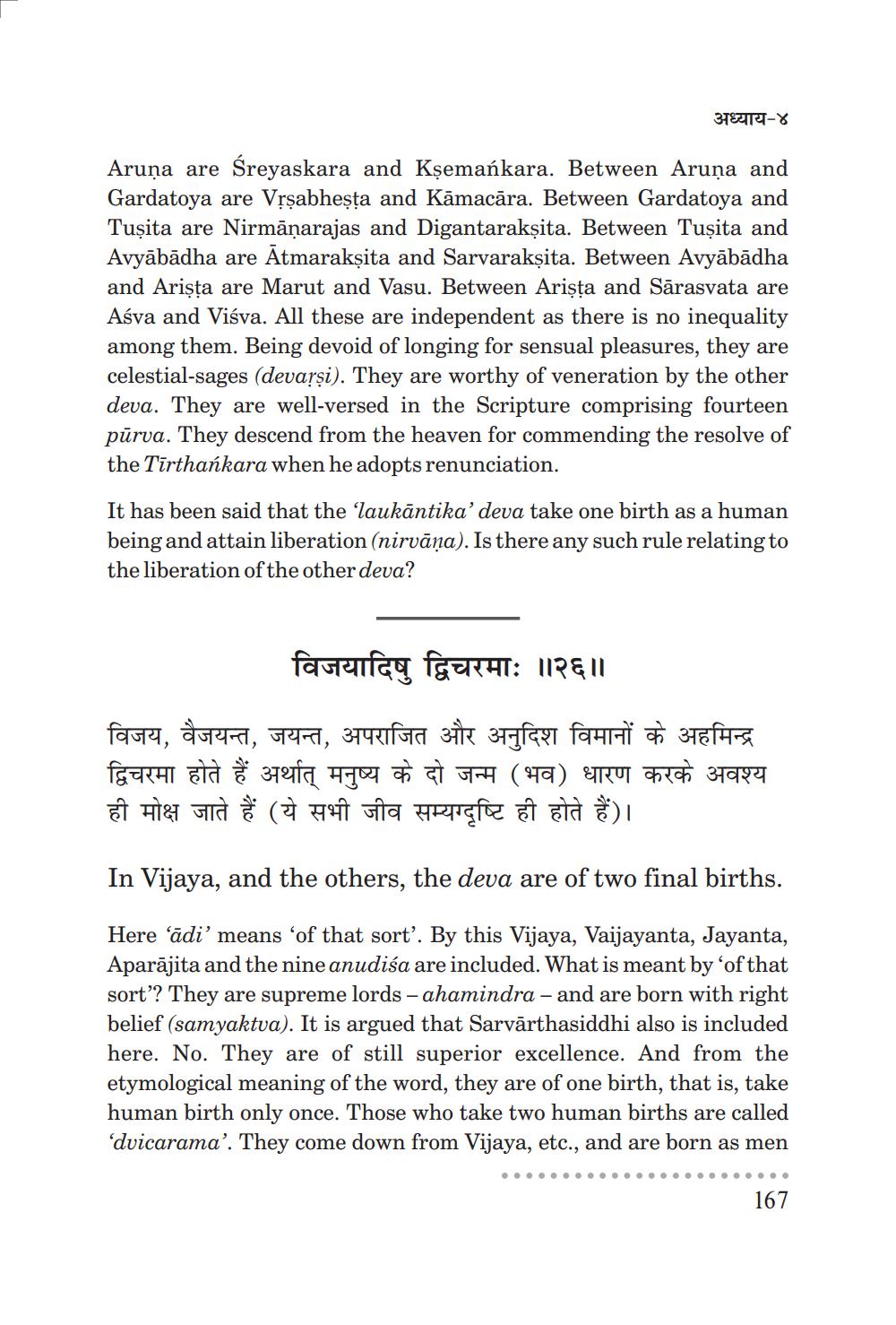________________
अध्याय- ४
Aruņa are Śreyaskara and Kṣemańkara. Between Aruna and Gardatoya are Vṛṣabheṣṭa and Kāmacāra. Between Gardatoya and Tuṣita are Nirmāṇarajas and Digantarakṣita. Between Tuṣita and Avyābādha are Atmarakṣita and Sarvarakṣita. Between Avyābādha and Ariṣṭa are Marut and Vasu. Between Ariṣṭa and Sarasvata are Aśva and Viśva. All these are independent as there is no inequality among them. Being devoid of longing for sensual pleasures, they are celestial-sages (devarsi). They are worthy of veneration by the other deva. They are well-versed in the Scripture comprising fourteen pūrva. They descend from the heaven for commending the resolve of the Tirthankara when he adopts renunciation.
It has been said that the 'laukantika' deva take one birth as a human being and attain liberation (nirvāṇa). Is there any such rule relating to the liberation of the other deva?
विजयादिषु द्विचरमाः ॥ २६ ॥
विजय, वैजयन्त, जयन्त, अपराजित और अनुदिश विमानों के अहमिन्द्र द्विचरमा होते हैं अर्थात् मनुष्य के दो जन्म ( भव) धारण करके अवश्य ही मोक्ष जाते हैं (ये सभी जीव सम्यग्दृष्टि ही होते हैं)।
In Vijaya, and the others, the deva are of two final births.
Here 'adi' means 'of that sort'. By this Vijaya, Vaijayanta, Jayanta, Aparajita and the nine anudisa are included. What is meant by 'of that sort'? They are supreme lords - ahamindra - and are born with right belief (samyaktva). It is argued that Sarvārthasiddhi also is included here. No. They are of still superior excellence. And from the etymological meaning of the word, they are of one birth, that is, take human birth only once. Those who take two human births are called 'dvicarama'. They come down from Vijaya, etc., and are born as men
167




